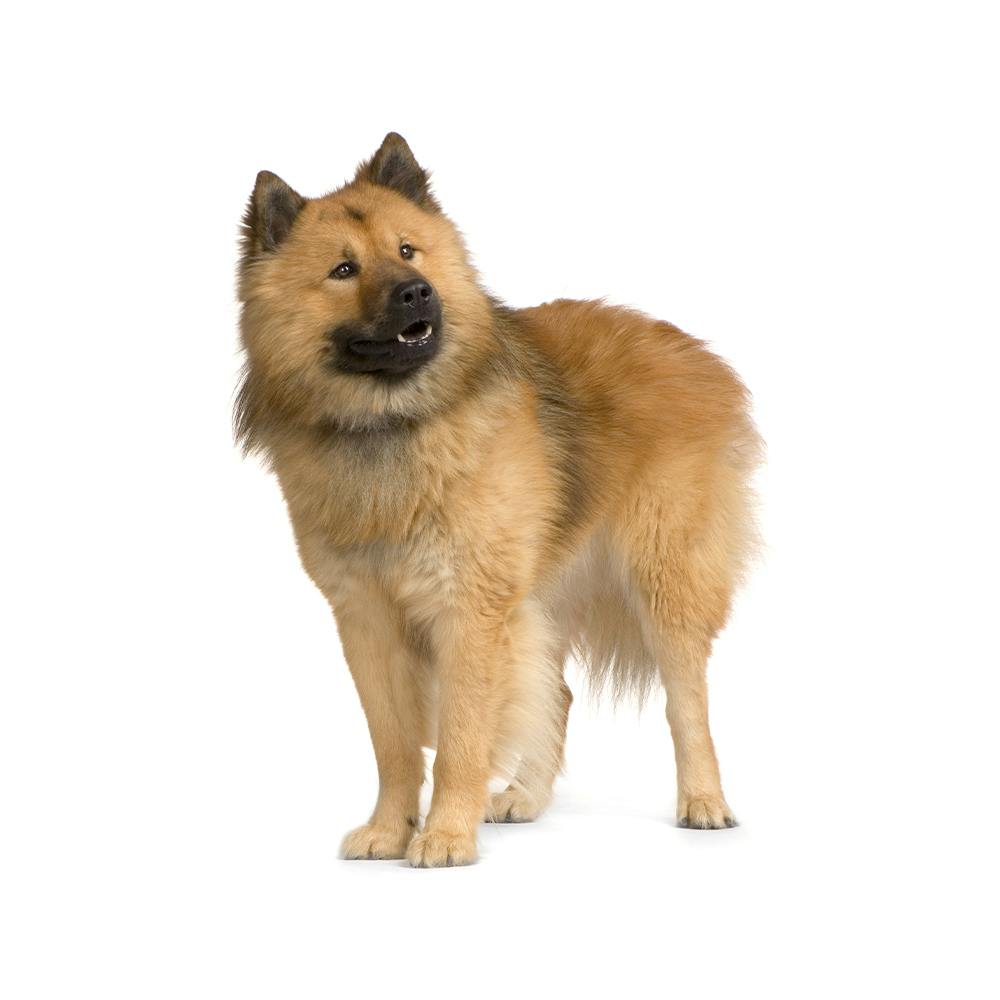
Eurasier
The Eurasier dog breed was developed in Germany by Julius Wipfel in the early 1960s. The breed's lineage comes from the cross-breeding of the Chow Chow, the Wolfspitz, also known as the Keeshond, and the Samoyed. Wipfel's intention was to create a breed with the best qualities of all three ancestors: the health, resilience, and temperament suitable for a family dog.
- Origin
- Germany
- Alternate Names
- Eurasian
- Life Expectancy
- 12-16 years
- Average Male Height
- 19-24 inches
- Average Female Height
- 19-24 inches
- Average Male Weight
- 40-57 pounds
- Average Female Weight
- 40-57 pounds
- Coat Length
- Medium
- Coat Type
- Double
- Coat Colors
- Black, Fawn, Red, Sable, Wolfgray
- Coat Pattern
- Black Markings
Genetic Predispositions and Health
Eurasiers may suffer from eye conditions, including distichiasis, ectropion, entropion, and progressive retinal atrophy. They may also be affected by Dandy–Walker malformation, degenerative myelopathy, hip and elbow dysplasia, epidermolysis bullosa simplex, exocrine pancreatic insufficiency, gastric torsion, hypothyroidism, and patellar luxation.
Personality and Behavior
Eurasiers are known for their calm, balanced, and self-assured demeanor. They are deeply attached to their human families and can be reserved towards strangers. However, they are not aggressive. Eurasiers are intelligent and learn quickly but may display a degree of independence. Despite their origin from breeds used for work in harsh climates, Eurasiers are companion dogs. They require consistent social contact with their family and should not be kept in a kennel or as an outdoor-only dog. Overall, with the right training and socialization, Eurasiers can make excellent family pets due to their loyal, gentle, and calm nature.
Fun Facts
Eurasiers inherit their genes from the Chow Chow, Wolfspitz, and Samoyed. They bear the distinct physical characteristics of these breeds, including the curled tail from the Chow Chow and Samoyed, the dense double-coat from all three breeds, and the spitz-like face.
The breed was called Eurasier to reflect their Asian and European heritage.
The Eurasier was recognized by the Fédération Cynologique Internationale (FCI) in 1973.
References
Doi:10.1002/9781119540687 https://www.ukcdogs.com/eurasier https://www.akc.org/dog-breeds/eurasier/ https://www.fci.be/Nomenclature/Standards/291g05-en.pdf
https://www.edelweisseurasiers.com/health.html